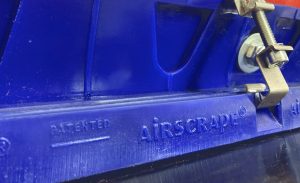The Atlas Copco pump selection programme provides a streamlined approach to pump selection, saving time, costs and effort. By accurately assessing user requirements, performing hydraulic calculations, analysing performance and offering recommendations, this programme – accessed via the IPR website – enables users to choose the optimal pump for their specific needs.
Ruaan Venter, Business Development manager at IPR, highlights the advantages customers can enjoy when using this programme.
One of the key advantages is the programme’s ability to provide accurate pump selection. By inputting relevant parameters such as flow rate, pressure requirements, fluid type and site conditions, the programme can recommend the most suitable pump model. This ensures that customers obtain a pump that meets their specific needs, minimising the risk of oversizing or under sizing the equipment.
Time and cost savings are another significant benefit of the Atlas Copco pump selection programme. “Instead of manually researching and comparing various pump models, customers can rely on the programme’s recommendations,” Venter says. “This streamlines the selection process enabling faster decision-making. Additionally, selecting the appropriate pump from the start, irrespective of the application, avoids costly mistakes such as equipment failure or excessive energy consumption.”
The programme also focuses on enhancing efficiency and performance. It considers variables such as duty cycle, system pressure and hydraulic losses to optimise the pump’s efficiency. Venter explains that by operating at its highest efficiency point, the pump can achieve energy savings and improved overall performance, resulting in lower operating costs and increased productivity.
Comprehensive pump information is another valuable feature of the programme. Customers can access detailed specifications, performance curves, power requirements, dimensions and other relevant data for each recommended Atlas Copco pump model. This enables customers to evaluate and compare different pump options, empowering them to make informed decisions based on their specific requirements.
Moreover, Venter emphasises, IPR customers using the Atlas Copco pump selection programme have access to technical support from the company’s pump experts. “If customers have any questions or require additional guidance during the pump selection process, they can rely on our support team for personalised and reliable assistance, ensuring customers receive ongoing support throughout their equipment selection journey,” he says.
A gamechanger in the pump selection process, the programme is simple to use and users provide specific parameters including flow rate, pressure or head requirements, fluid properties and site conditions. These input parameters lay the foundation for accurate pump selection, and this information is used to perform hydraulic calculations which consider factors such as friction losses, elevation changes, system restrictions and fluid properties to determine the required pump performance.
Using the hydraulic calculations, the programme matches the user’s requirements with the available pump models in the Atlas Copco range. To do this, it considers pump type, size, efficiency curves and technical specifications to identify the most suitable options, and then provides performance analysis of the selected pump models. The programme generates performance curves, offering insights into the pump’s efficiency, head-flow characteristics, power consumption and other performance indicators.
Venter says that users can compare multiple pump models side by side using the programme. “This feature allows them to assess performance, efficiency, dimensions and other key characteristics, all aiding at facilitating an informed decision,” he says.
The Atlas Copco pump selection programme was designed with the primary aim of optimising the pump selection process, and provided the correct input parameters are provided it will recommend the most efficient pump size, impeller configuration and other features that could enhance performance while meeting user requirements.
Depending on the application, the programme factors in material compatibility, environmental regulations, noise levels and other site-specific requirements to ensure the selected pump is suitable for the given conditions.
Venter says the algorithms typically employ hydraulic calculations, performance modelling, database integration, optimisation techniques and user-friendly interfaces.
The algorithm begins with hydraulic calculations, using the user’s input to determine pressure requirements, flow rates, head losses and other hydraulic parameters. Factors like fluid properties, pipeline dimensions, elevation changes and system restrictions are considered.
Performance modelling comes into play as the algorithm uses pump-specific performance curves and mathematical models. These models are based on empirical data and extensive testing, allowing the algorithm to match the hydraulic calculations with the pump performance models to identify suitable options.
Database integration is crucial, as the algorithm accesses a comprehensive database of pump models with technical specifications, performance curves, efficiency data, and other relevant information. It compares the hydraulic calculations against the database to find pumps that meet the required performance parameters.
Optimisation techniques may be employed to fine-tune the pump selection process. The algorithm considers factors such as energy efficiency, NPSH requirements, impeller size and other design parameters to optimise performance and reliability. It can provide recommendations based on these optimisations.
To ensure user-friendliness, the algorithm is integrated into a software interface and is available as an online tool on the IPR website. This interface allows users to input their requirements, view performance data, compare pump models and receive recommendations. The algorithm processes the user input and presents the outputs in a clear and accessible manner.
“Of particular significance is that Atlas Copco’s specific algorithm includes additional components and refinements tailored, and was developed leveraging expertise, experience and extensive pump knowledge resulting in a robust and accurate algorithm for pump selection,” Venter concludes.






